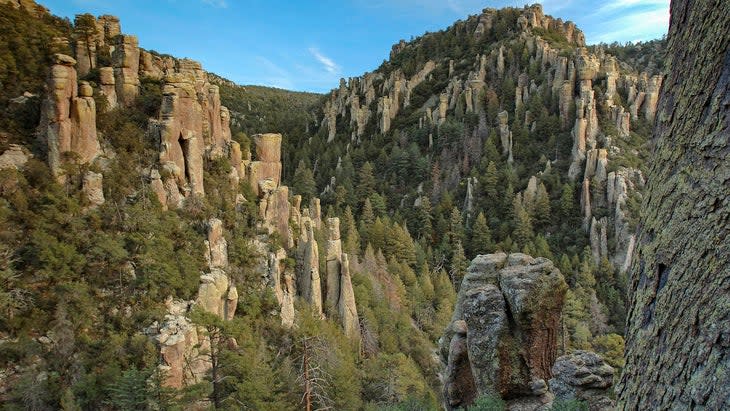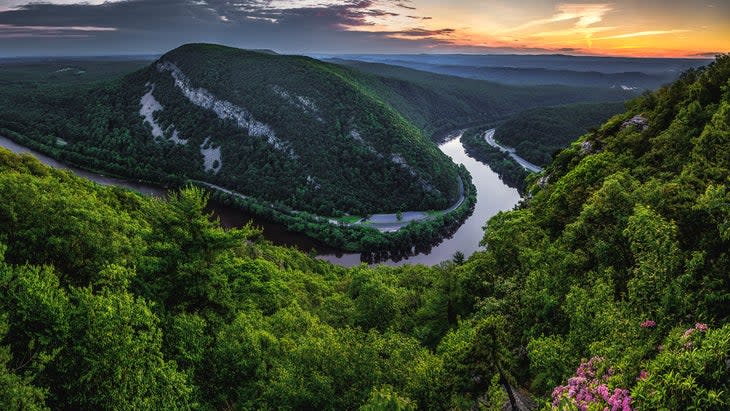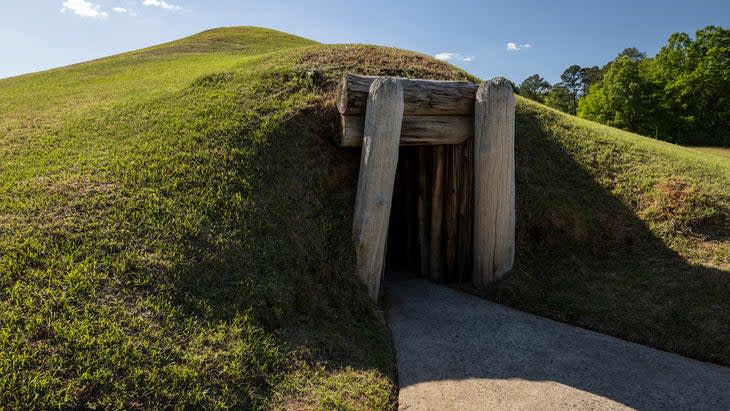Could One of These Be Our Next National Park?
This article originally appeared on Outside
It's not even novel to say it anymore: top national parks are experiencing an overcrowding dilemma. In 2021, forty-four National Park Service units set visitation records, and, for the first time in history, Great Smoky Mountains crossed the 14 million visitor mark.
Last year, 50 percent of total recreational visits occurred in just 6 percent of all parks, explained Will Shafroth, President and CEO of the National Park Foundation, when I emailed him about the current crisis. "We need more people to know that there are more than 420 NPS sites across the country and many of them are in folks' backyards," he said.
Dan Ritzman, Director of the Lands, Water, and Wildlife Campaign for the Sierra Club, noted that this increase in visitation comes at a cost. "We are definitely concerned with the impacts from the increased visitation to these areas," he said, citing Yosemite, Zion, and Rocky Mountain.
Although taking visitation pressure off top parks will require a variety of tactics--like increasing funding, raising awareness about lesser-known public lands, and increasing access to NPS units closer to urban areas--some legislators, like U.S. Senator Angus King, have hinted that we're dealing with a supply and demand issue. One logical steam vent for the surge in crowds is simple: create more parks.
“Expanding opportunities in our parks and public lands has to be a part of our national recovery," said U.S. Senator Martin Heinrich (D-N.M.) in a statement to Outside. "These lands are our lands, and they heal us in a way few things can." Senator Heinrich was a key advocate for the advancement of White Sands into park status, seeing its bill succeed after a large community effort and two years in Congress changed its designation in 2020.
But legislation to elevate an area to fabled national park status is difficult, and congresspeople routinely introduce bills to upgrade a noteworthy national lakeshore or monument, only to have them shot down during the committee process. A vote for final approval (from both houses of Congress) can take years.
We've been tracking the top contenders for areas that are the most likely to become America's 64th national park, based on local support and legislative action currently in progress. At the end of the day, it's anyone's guess, but these three monuments are well on their way to park recognition.
Chiricahua, Arizona

Often touted as a "wonderland of rocks," Chiricahua National Monument, in southeastern Arizona, is known for its "unique landscape of rhyolitic rock formations created by massive volcanic eruptions and the subsequent erosion of that rock by wind, water, and ice over millennia," said Naaman Horn, a spokesperson for the National Park Service. A paved, eight-mile scenic drive and 17 miles of day-use hiking trails crisscross the 12,025-acre space, bringing visitors face-to-face with miles upon miles of towering pinnacles and delicately eroded balancing boulders. The monument is also an historic Apache Homeland.
There are currently two active bills aiming to change the title of Chiricahua, the latest of which was introduced in the House of Representatives in February 2022. Support for this park designation has already passed in the Senate, and so far, the Department of the Interior has supported both bills and is working to establish a Tribal Commission to ensure the protection of and access to traditional plant and mineral resources, as well as historic cultural and religious sites. A formal vote by the House of Representatives is still needed to designate the unit.
Delaware Water Gap, New Jersey and Pennsylvania

Encompassing 66,741 acres of forested hillsides, dozens of cascading waterfalls, over 100 miles of trails, and a 40-mile swath of the mighty Delaware River, Delaware Water Gap National Recreation Area is one of the most beloved natural sites in the country, receiving over 4.5 million visitors annually. Grassroots organizations like the Sierra Club are rallying behind a huge local effort to make the area better known on a national scale. In January of this year, New Jersey's Warren County Board of Commissioners voted unanimously on a resolution that could turn "the Water Gap" into a national park, but recently rescinded that support until they receive more information about traffic, parking, boundaries, funding, and hunting. Ultimately, an act of Congress is needed for final approval.
If a proposal goes through, it would be the first national park in New Jersey and Pennsylvania, adding to the scant nine parks east of the Mississippi River, providing outdoor access to millions of city dwellers in nearby states. "That extra level of conservation [will] provide them with the additional resources needed to work with the increased visitation that would come with national park protections," said the Sierra Club's Dan Ritzman.
Ocmulgee Mounds, Georgia

There's public record as far back as 1935 that highlights efforts to create a national park out of the culturally significant and ecologically diverse lands that make up Ocmulgee Mounds National Historic Park in central Georgia, said Seth Clark, Executive Director of the Ocmulgee National Park and Preserve Initiative. Not only is the Ocmulgee River Corridor home to endangered plant and wildlife species and a fantastic spot for anglers, it's also home to 17,000 years of human history, dating back to the Paleo-Indian Period.
The more than 800 archeological sites that the park is named for began to be excavated during Roosevelt's New Deal and contain the only known example of a ceremonial spiral mound in North America, thought to have been built around 900 AD. "Our coalition sees the preservation of these lands in true partnership and consultation with the Muscogee (Creek) Nation as a necessary act of atonement worthy of the country's most vaulted public lands designation," said Clark, who also serves as the mayor pro tem of the neighboring town of Macon. If the NPS' Ocmulgee River Corridor Special Resource Study, initiated in 2019, succeeds, it could become the first national park in Georgia.
No matter where you visit this summer, outdoor lovers will need to get creative if they want to experience the pristine, untrammeled nature that the ideal of a national park is supposed to provide. "For park visitors, it's always a good idea to 'know before you go.' If you're considering a trip to a well-known park, call the park first and ask about ways to avoid crowds and inquire about other nearby lesser-known parks to also add to your journey," said National Park Foundation's Will Shafroth.
With park attendance expected to rise even higher in the coming years, there's no better time than now to do a little research, dig deeper, and check out one of the under-appreciated gems among the National Park Service's 423 sites.
For exclusive access to all of our fitness, gear, adventure, and travel stories, plus discounts on trips, events, and gear, sign up for Outside+ today.

